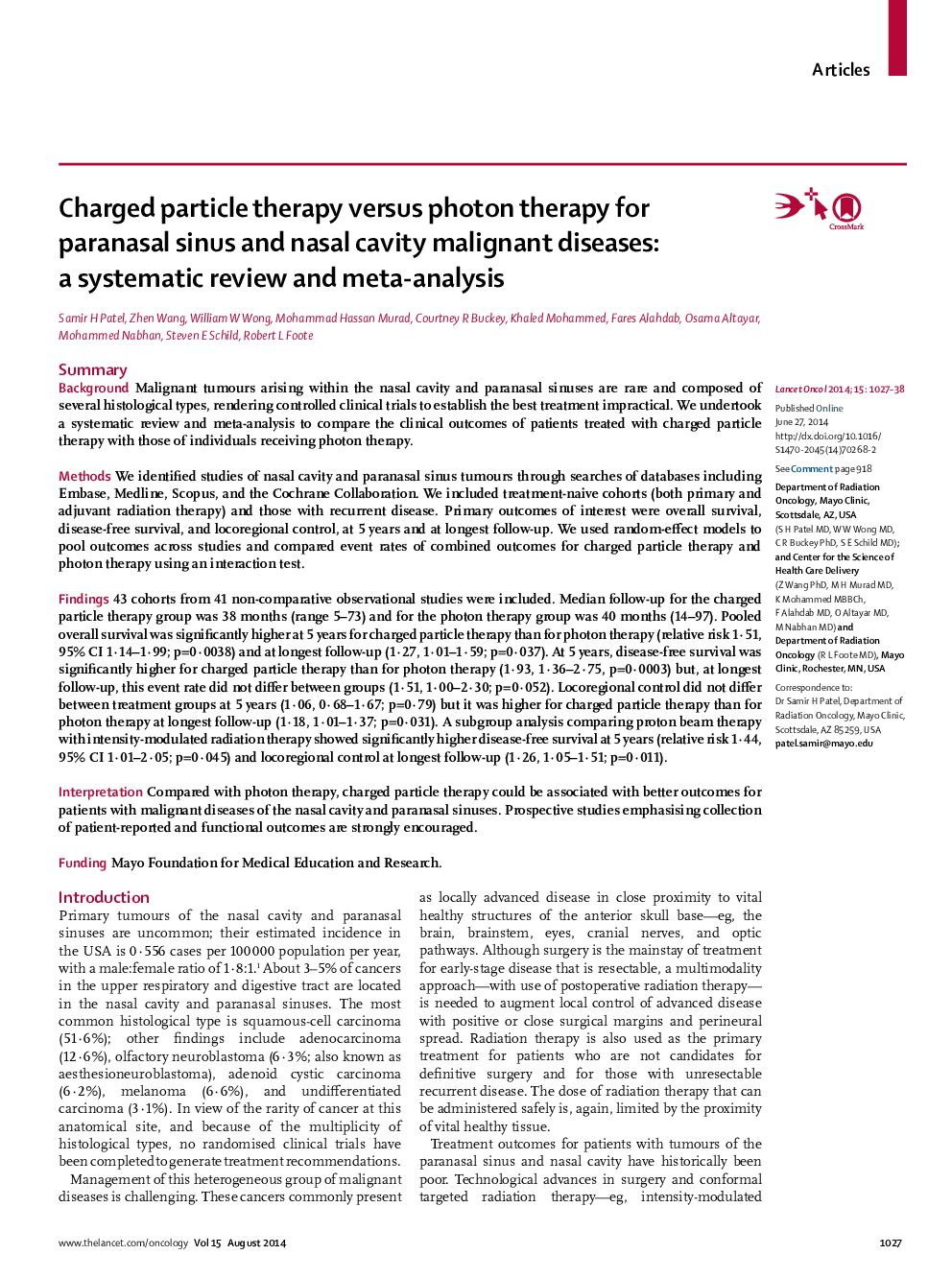| Article ID | Journal | Published Year | Pages | File Type |
|---|---|---|---|---|
| 3994318 | The Lancet Oncology | 2014 | 12 Pages |
SummaryBackgroundMalignant tumours arising within the nasal cavity and paranasal sinuses are rare and composed of several histological types, rendering controlled clinical trials to establish the best treatment impractical. We undertook a systematic review and meta-analysis to compare the clinical outcomes of patients treated with charged particle therapy with those of individuals receiving photon therapy.MethodsWe identified studies of nasal cavity and paranasal sinus tumours through searches of databases including Embase, Medline, Scopus, and the Cochrane Collaboration. We included treatment-naive cohorts (both primary and adjuvant radiation therapy) and those with recurrent disease. Primary outcomes of interest were overall survival, disease-free survival, and locoregional control, at 5 years and at longest follow-up. We used random-effect models to pool outcomes across studies and compared event rates of combined outcomes for charged particle therapy and photon therapy using an interaction test.Findings43 cohorts from 41 non-comparative observational studies were included. Median follow-up for the charged particle therapy group was 38 months (range 5–73) and for the photon therapy group was 40 months (14–97). Pooled overall survival was significantly higher at 5 years for charged particle therapy than for photon therapy (relative risk 1·51, 95% CI 1·14–1·99; p=0·0038) and at longest follow-up (1·27, 1·01–1·59; p=0·037). At 5 years, disease-free survival was significantly higher for charged particle therapy than for photon therapy (1·93, 1·36–2·75, p=0·0003) but, at longest follow-up, this event rate did not differ between groups (1·51, 1·00–2·30; p=0·052). Locoregional control did not differ between treatment groups at 5 years (1·06, 0·68–1·67; p=0·79) but it was higher for charged particle therapy than for photon therapy at longest follow-up (1·18, 1·01–1·37; p=0·031). A subgroup analysis comparing proton beam therapy with intensity-modulated radiation therapy showed significantly higher disease-free survival at 5 years (relative risk 1·44, 95% CI 1·01–2·05; p=0·045) and locoregional control at longest follow-up (1·26, 1·05–1·51; p=0·011).InterpretationCompared with photon therapy, charged particle therapy could be associated with better outcomes for patients with malignant diseases of the nasal cavity and paranasal sinuses. Prospective studies emphasising collection of patient-reported and functional outcomes are strongly encouraged.FundingMayo Foundation for Medical Education and Research.
